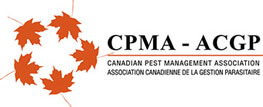
Skunks: Typically, skunk dens can be found under front steps, sheds, porches, and decks. Live traps placed by the den entrance allow for the skunk(s) to be captured alive and relocated as required. In the summer months, a skunk is typically caught in less than one week. In the dead of winter, skunks typically semi-hibernate for a period of about six weeks. Therefore, how long it will take to capture a skunk can be unpredictable in the winter months. Our approach is a passive approach when capturing live animals. This reduces the stress for the animal and allows a better opportunity of successful relocation.

Squirrels: Many times, squirrels gain access to the roof line of homes and various structures. A common complaint is usually about one or two squirrels. The key to a successful solution is to capture as many squirrels as possible on the exterior of the property, taking the pressure off the structure. Once all the squirrels have been caught, the access points can be sealed.

Pocket Gophers: A single pocket gopher can destroy your garden in a very short time. Pocket gophers will burrow beneath garden beds, plants and other shrubs, trees and vines, feeding on the roots as they dig. The home owner, wondering what has happened to their lawn, will see mounds of soil the pocket gophers leave behind after an active night of foraging.

Raccoons: Raccoons can live in a wide range of habitats. They require, to survive, only a source of water, food, and a protected area for denning. The habitats best suited for raccoons are hardwood swamps, floodplain forests, fresh and saltwater marshes, and both cultivated and abandoned farmland. A raccoon’s home-range size in urban areas is about 3 to 40 hectares. Raccoons feed off fruit and insects in gardens, off leftovers in municipal waste and off other easily available food sources. In urban zones, a large number of sleeping areas exist, such as in hollows in old garden trees, cottages, garages, abandoned houses, and attics. The raccoon is also a strong swimmer, but only when forced to swim. It is known more for its climbing abilities. It is capable of making a variety of sounds, including whistling, shrieking, chattering, clicking its teeth, snarling and growling.

















